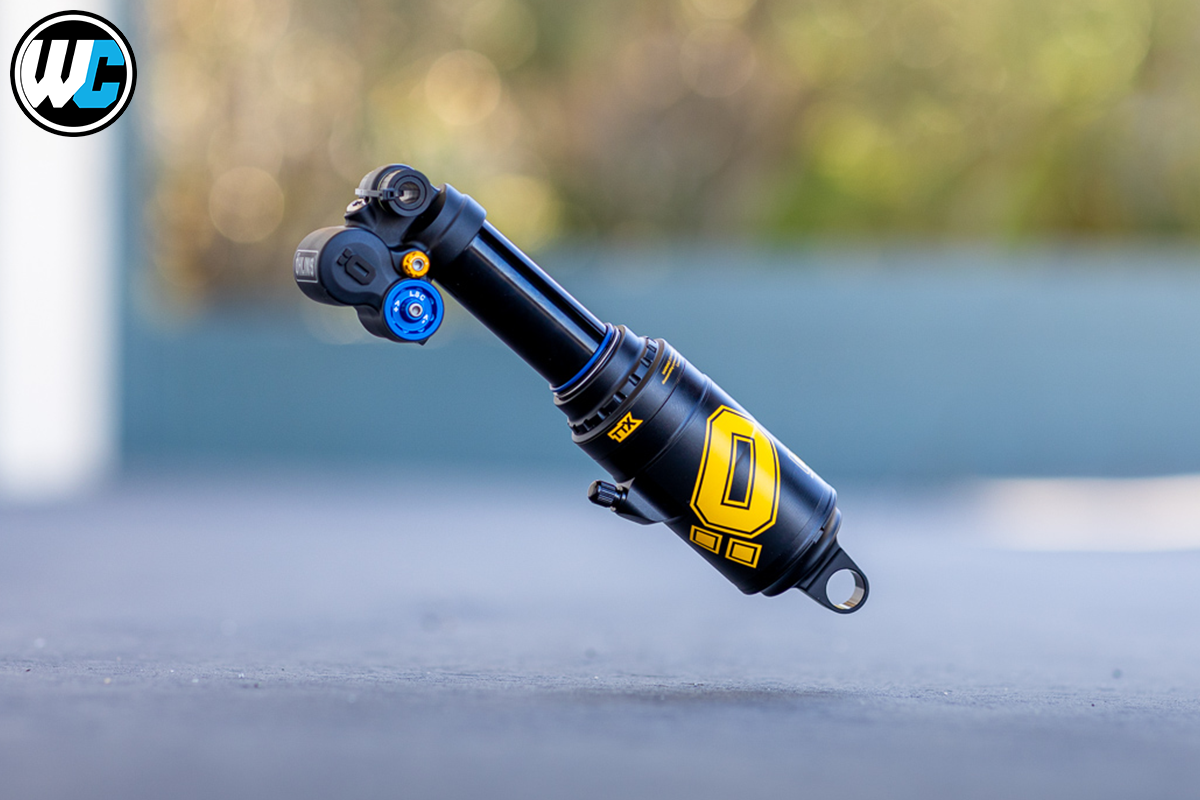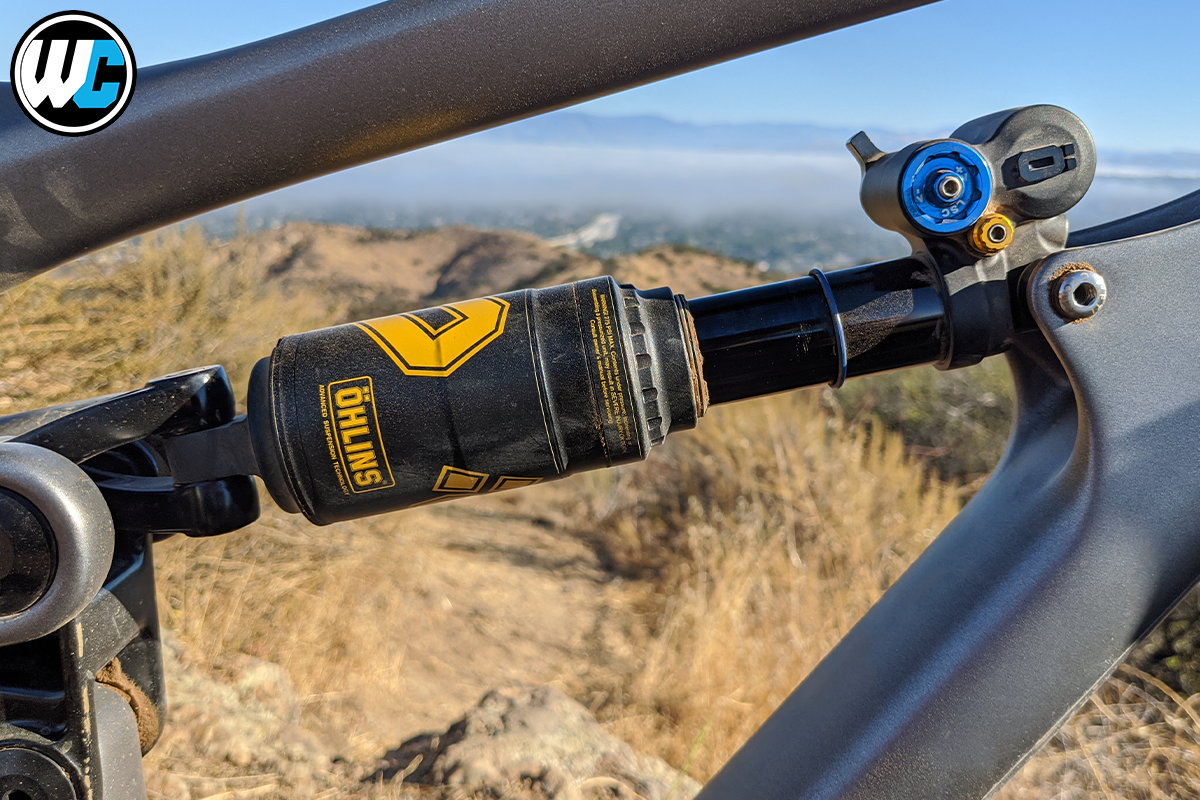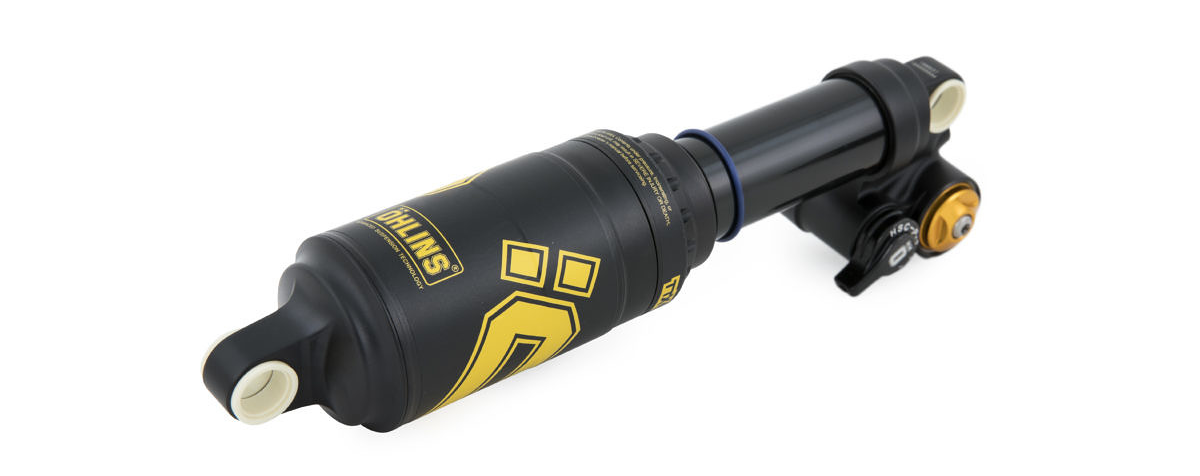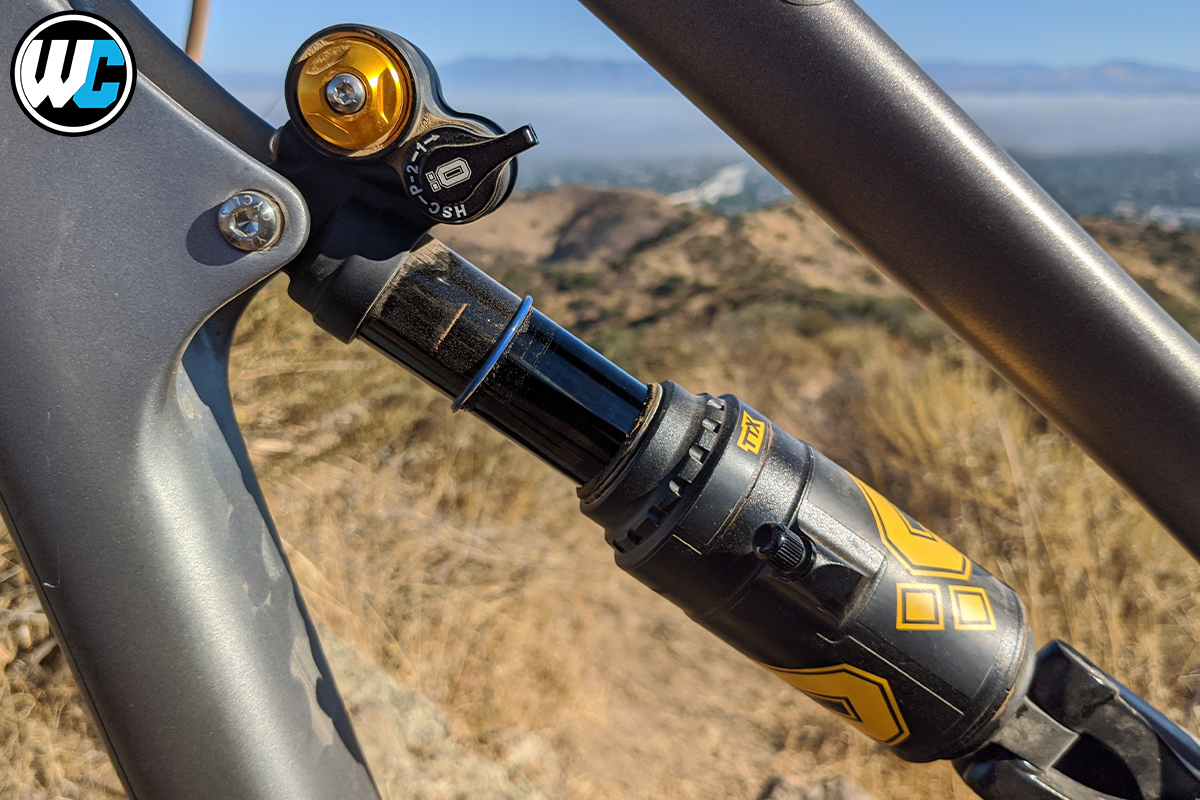- Continue Shopping
- Your Cart is Empty
Ohlins TTX Air Shock: Employee Review
Words By: Colin Reed
It was quite a welcome surprise when Ohlins first stepped into the mountain bike scene, but some time has passed since then and I think they’ve quite comfortably found their spot in the MTB world. While you may not see Ohlins as often as say Fox or Rockshox, it’s not unusual to see their shocks on the trail, especially on Specialized bikes. Their first foray into mountain biking came in the form of a shock, and their newest air shock, the TTX Air is a standout piece of hardware. It takes a lot of DNA from the original TTX coil shock and lightens things up with an air canister instead of a metal spring. It features Ohlins’ well-engineered TTX damper, adjustable low speed compression, rebound, three-setting high speed compression, and air spring volume reducers. Truth be told, it’s not the most feature packed shock, but even more truth be told, you don’t need every bell and whistle to have an incredible rear shock.
Overview
The Ohlins TTX Air is essentially the same shock as the TTX Coil, but with air for significantly less weight. The external adjustments include low speed compression with 16 clicks, low speed rebound with 7 clicks, and a three position high speed compression lever. You can pull the air canister off to add or remove air spring reducers, but I never did because the amount of progression from the factory was just right for my 2020 Yeti SB150. Overall, it’s a neat and tidy package.
Let’s talk just for a moment about the high speed compression adjuster because it’s definitely the one I used the most. The first reason I played with this adjustment more than the others is because it’s essentially a climb switch. It has full open, trail mode, and climb mode. Full open is exactly what you’d expect, trail mode is somewhere in the middle (duh) and the fully closed climb mode isn’t a super hard lockout. I kind of appreciate the softer-than-usual lockout because it means you get a little more traction and pressure relief between the legs for essentially the same climbing efficiency. The other reason I played with this one more is because it’s the only adjustment that doesn’t require an allen key, which I thought was kind of a bummer. For some reason, the TTX Air requires an allen if you want to adjust the low speed compression or the rebound. This made setup a little annoying, but it’s not the end of the world. Once you get the shock dialed in, you don’t have to worry about accidentally moving the knobs and having an unexpected ride.
On The Trail
If you haven’t picked up on it yet, the TTX Air is a simple shock, but don’t let that fool you. It’s also a really good shock. I feel like there’s a small misconception that just because a shock doesn’t have a million adjustments and you can’t tune it to simultaneously take on Redbull Rampage and World Cup XC courses, it automatically means a shock is bad. The TTX damper in the Air covers a wide range of trails. It also feels really smooth, really controlled, and really well damped. Yeah sure, I played around with the rebound and low speed compression until I was satisfied, but then I just kind of left them there for the most part. It felt great on both my local DH trail with hugely chunky, repeated hits and also on my smooth, bermed pedally trails. If you set the sag correctly and get the rebound to neither pogo-stick you off nor pack up, the TTX takes care of the rest. Ohlins twin tube technology means that the oil inside the shock circulates better than almost every monotube shock out there, which is most shocks.
The TTX Air is really smooth, thanks to the low-friction shaft (which looks cool in black) and the twin tube damper. I can’t really say it enough that this shock just glides through the travel and you can feel just how composed it is between your legs. Stiction is minimal, but it does exist and is still less than most competitor’s shocks.
The TTX Air isn’t necessarily 100% set it and forget it, unless you really want it to be. For my steeper DH oriented trails, I dialed down the low speed compression just a little bit just so I could have an easier time hanging off the back. When it came to flatter trails or trails that I needed more support in the corners, I just put the low speed compression back in. What happened if I forgot to adjust it one way or the other before hitting a trail? Not much. The thing about the TTX Air is that it really takes care of the rider. Harsh, repeated hits generally felt smoother than you would expect from an air shock. There was enough traction in smooth, bermed turns to really feel like you could push through the corner. It just kind of takes everything in stride.
Conclusion
If I’m honest, I prefer being able to fine tune a shock for every occasion, but Ohlins really makes me really reconsider the need to do something like that. It’s a slightly boring shock in terms of features, but it was an absolute joy to ride and completely makes you forget that you can’t tune it to within an inch of its life. The Ohlins TTX Air takes an incredible damper from an incredibly well-tuned and well-regarded shock, removes the coil and adds lightness, to create a mountain bike shock that simply works everywhere. This shock goes way above and beyond what it needs to for the set it and forget it crowd. It is, without a doubt, the best air shock you can buy if you don’t want to spend time tuning.











